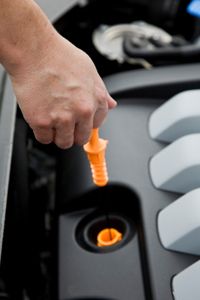Soot buildup is a very common (and basically inevitable) plague of diesel engines, since soot's primary ingredients are components of diesel fuel. Excessive soot could simply signal the need for an oil change, or it could indicate bigger underlying problems.
Soot forms as a byproduct of incomplete combustion -- when the air and fuel mixture that powers the engine fails to completely ignite to produce its energy potential, there's leftover matter. When combustion is complete, only carbon dioxide and water remain; however, it's pretty rare that an engine combusts completely efficiently, so most engines produce some amount of soot. It's a common misconception that soot doesn't occur in gasoline engines; it does, but soot problems are much less common because gas engines combust fuel and expel exhaust more efficiently.
Advertisement
As soot builds to abnormal levels, engine problems begin. Soot thickens oil and negatively affects viscosity, which means the engine has to work harder to start and run during cold temperatures. Soot circulation also contributes to the formation of varnish and carbon deposits throughout the engine, which can wear down valves and seals, reducing efficiency and eventually causing failure. When excessive soot collects, it forms a congealed mass known as sludge, which is a leading cause of premature failure in diesel engines.
Once the damage is done, there's no way to alleviate its symptoms by simply using motor oil additives. Incidental amounts of soot rarely causes catastrophic engine failure if the engine is maintained properly, but as soot builds, the problems compound. Usually, two or more sources of engine damage combine to cause complete engine component failure.
On the next page, we'll discuss ways to prevent soot buildup in diesel engines.
Advertisement

